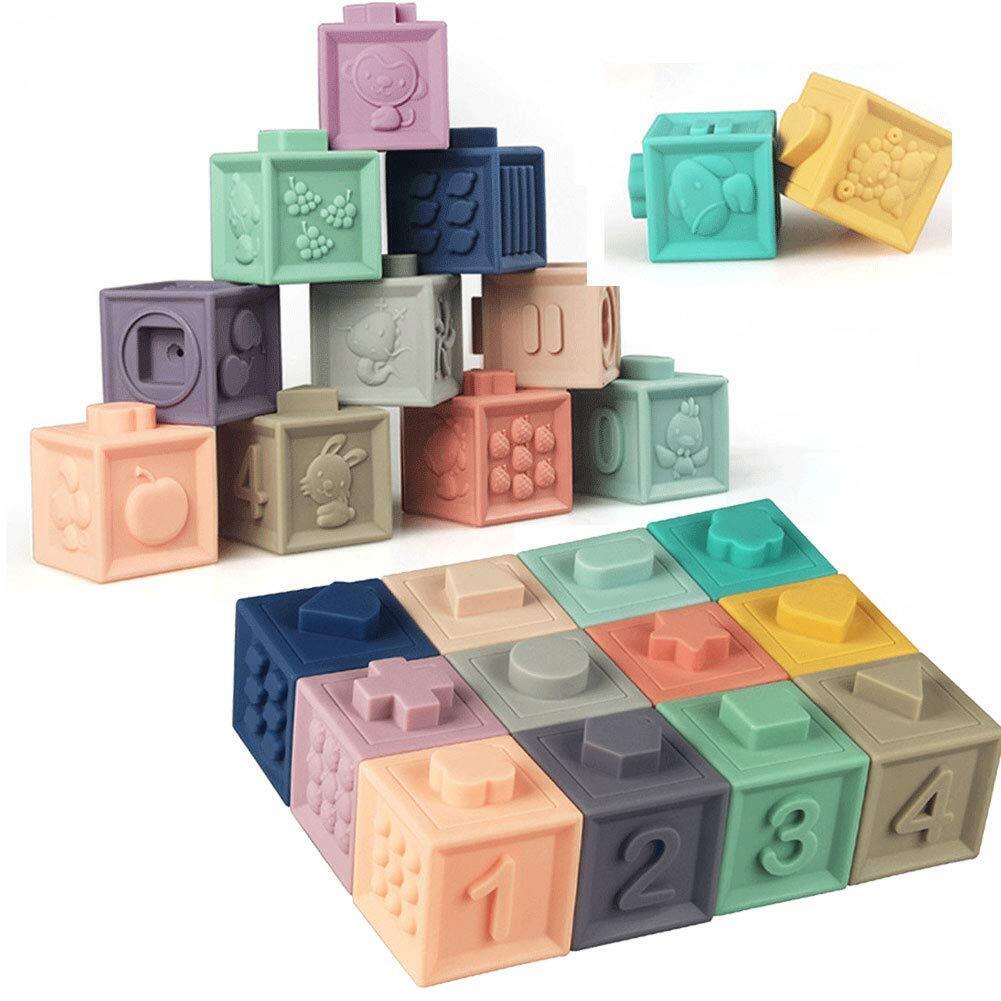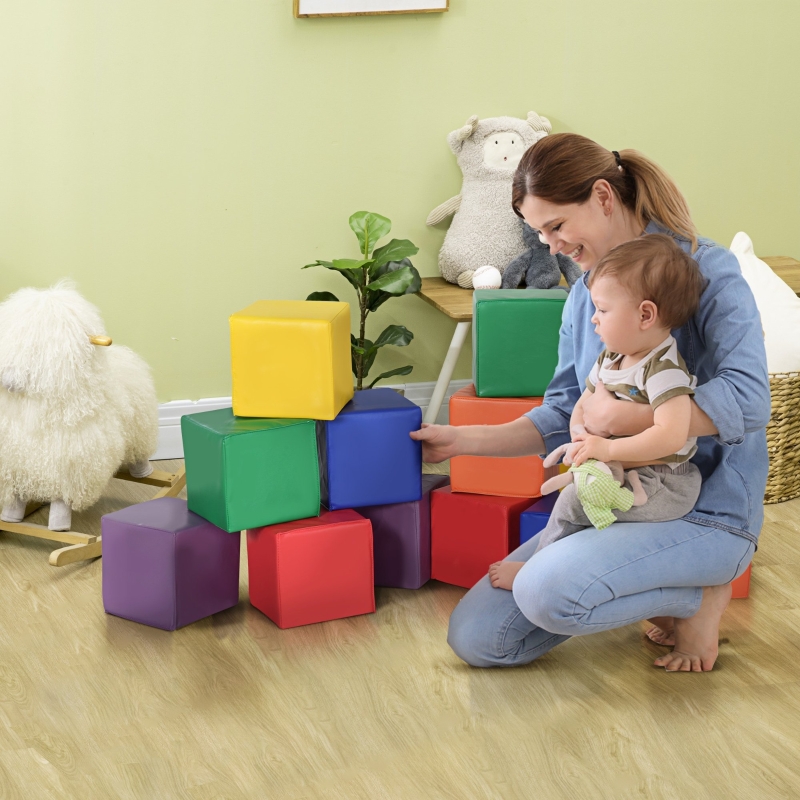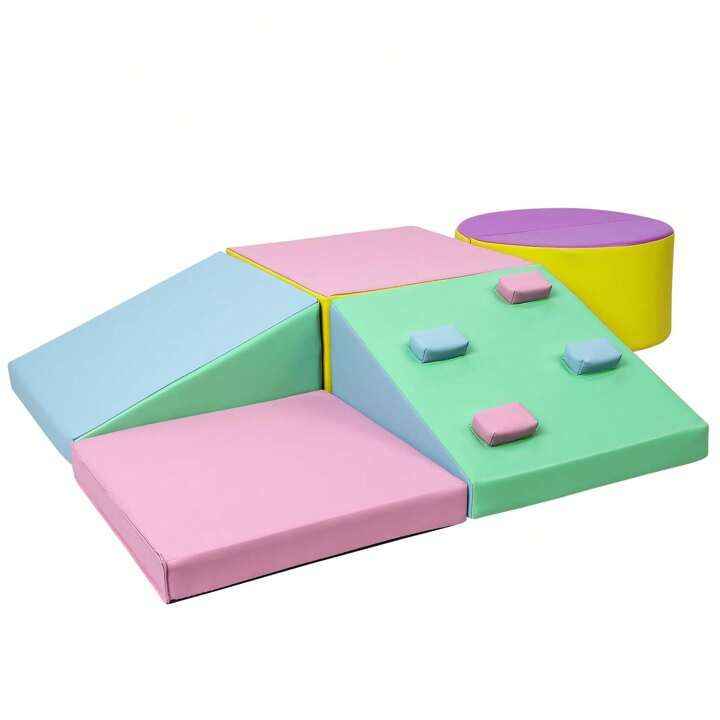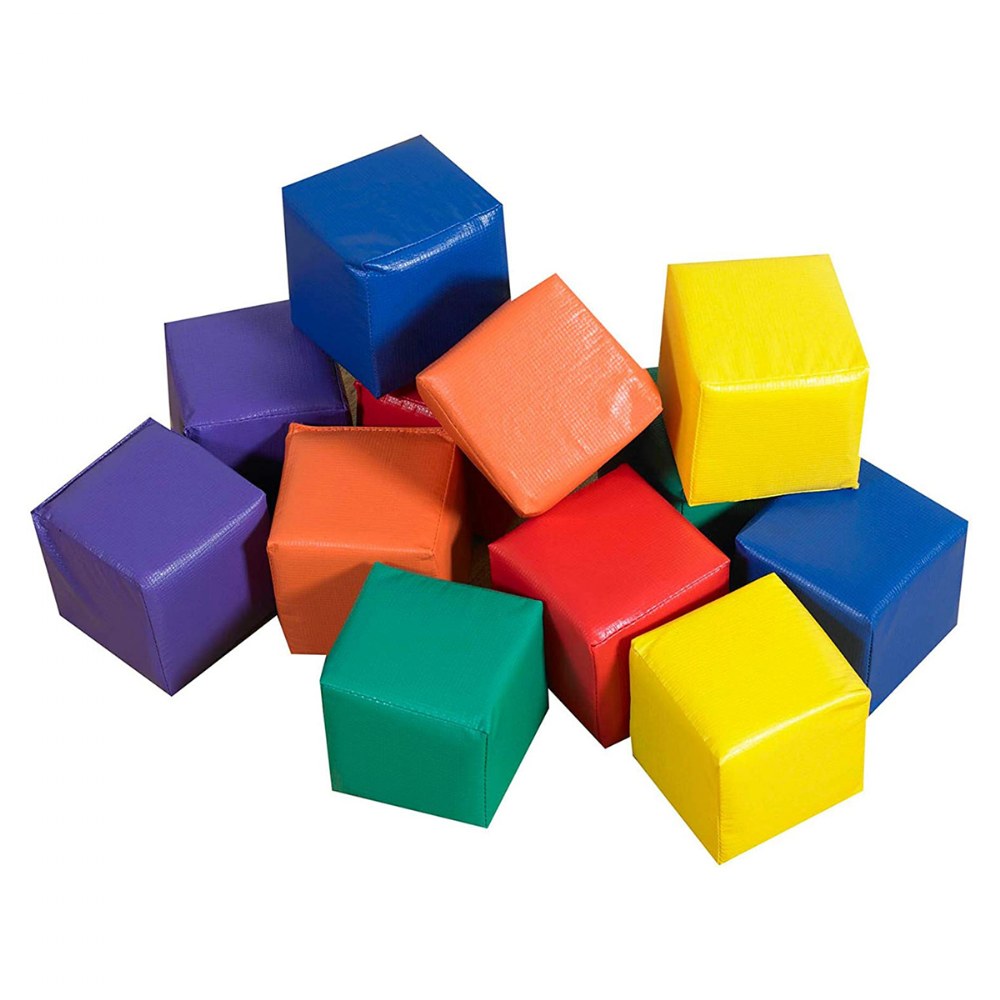The Importance of Block Play for Toddlers
Block play is more than just fun for toddlers. It’s a crucial part of their early development. When little hands stack, balance, and arrange toddler blocks, important skills come into play. First, there’s the fine motor skill of grasping and stacking. Toddlers learn to use their fingers and hands with precision. This helps prepare them for writing and other daily activities. Cognitive growth happens every time toddler blocks click together. Toddlers learn cause and effect when they see a tower fall after pushing it. They learn about shapes, sizes, and weight during play. Matching and sorting blocks also teach them about colors and design.

Play with blocks lays the foundation for math and science skills. Toddlers discover early math concepts like counting and sizes. They learn geometry when they figure out how to make structures stable. Young ones explore basic physics principles when they see which shapes roll or slide. Social skills get a boost when toddlers play with others. Sharing, taking turns, and cooperative building happen during group play with blocks. They learn to communicate their ideas and handle emotions when structures don’t work out. Emotional development also comes from the sense of accomplishment when they build something on their own.
In sum, block play is key to rounding out a toddler’s development. It encourages essential skills in a relaxed and playful environment. So, it’s vital to include time for block play in a toddler’s daily routine. With each block they place, toddlers are building the foundation for their future learning.
Essential Types of Blocks for Toddlers
Selecting the right types of toddler blocks is crucial for their developmental journey. Here are some essential varieties of blocks that you should consider introducing to your toddler:
- Wooden Blocks: Classic and durable, wooden blocks come in various shapes and sizes. They are ideal for building sturdy structures and can last for years.
- Plastic Interlocking Blocks: These colorful blocks are easy to connect and take apart. They encourage creativity and enhance fine motor skills.
- Foam Blocks: Soft and lightweight, foam blocks are safe for younger toddlers. They can be used for quiet play and are less likely to cause injury.
- Magnetic Blocks: Magnetic blocks stick together, creating a unique play experience. They can challenge a toddler’s problem-solving skills and understanding of physics.
- Alphabet Blocks: Blocks with letters and numbers on them serve dual purposes. They offer the fun of building and the basics of literacy and numeracy.
- Shape-Sorting Blocks: With cut-outs in various shapes, these blocks teach toddlers to match shapes and colors, enhancing their cognitive skills.
- Pattern Blocks: Designed to create specific patterns and pictures, these blocks help in recognizing shapes and developing spatial awareness.
Each type of block supports different aspects of development. They enrich a toddler’s playtime with educational and developmental benefits. For parents, it’s important to provide a variety of blocks to keep the play both fun and beneficial. Remember to include assorted types of toddler blocks in your child’s play area to stimulate learning across various domains.

Cognitive Benefits of Blocks for Toddler Development
Playing with toddler blocks does more than keep tots busy. It sparks learning and growth in young minds. These colorful, varied shapes are tools for boosting a toddler’s cognitive abilities. Let’s explore how these simple toys can have a big impact.
- Problem-Solving Skills: When a toddler figures out how to balance blocks to avoid tumbling, they’re solving a problem. Each time they select a block, they’re thinking ahead. Which one fits? What happens if I stack this here? They’re learning to think critically, a skill they’ll use in all walks of life.
- Spatial Awareness: Handling blocks of different shapes and sizes, toddlers start to understand space. They learn what fits where. This is crucial for later math and science learning, like geometry and physics.
- Memory and Recall: Toddlers often try to replicate structures they’ve built before or seen elsewhere. This requires remembering shapes and how they go together, sharpening their memory.
- Language Skills: As they play, toddlers learn to label blocks by shape, size, color, and feature. “Square,” “big,” “red,” and “smooth” become part of their vocabulary. Communicating with others about their play furthers language development.
- Recognizing Patterns and Sequences: Placing blocks in a particular order teaches pattern recognition. Understanding that a square follows a circle is the start of recognizing sequences, another key cognitive skill.
- Concentration and Focus: Block play demands attention. A toddler learns to concentrate when trying to achieve a goal, like building a tall tower. This focus is a mental muscle they’ll flex throughout life.
Overall, toddler blocks are not just toys. They are building blocks for the mind. Including block play in your toddler’s daily routine is a fun way to support their cognitive development. This type of play sets the stage for future learning in a natural, enjoyable way.
Physical and Motor Skills Development through Block Play
Toddler blocks toy are not just for cognitive growth. They are also great for physical and motor skills development. Here’s how play with blocks can help:
- Fine Motor Skills: Picking up and placing blocks refines a toddler’s finger and hand movements. This practice is essential for later skills like writing.
- Hand-Eye Coordination: As toddlers reach for blocks and stack them, they improve their hand-eye coordination. This is key for many daily tasks.
- Gross Motor Skills: While playing with larger blocks, toddlers use their whole body. Lifting, carrying, and moving blocks boost their gross motor skills.
- Bilateral Coordination: Using both hands together happens a lot in block play. This bilateral coordination is useful for tasks like tying shoes or cutting with scissors.
- Strength and Balance: Stacking blocks requires a steady hand and good balance. As toddlers work to not knock their structures down, they build muscle strength.
- Dexterity: Turning blocks to fit them together improves dexterity. Toddlers learn to control their fingers with precision during this process.
Incorporating block play into daily routines can make a big difference. It’s a fun and active way for toddlers to build their physical skills, one block at a time.

Social and Emotional Growth with Block Activities
Playing with toddler blocks isn’t only about building; it’s also a key aspect of a child’s social and emotional development. Here are some ways block activities can foster growth in these areas:
- Cooperation: Engaging in block play with peers, kids learn to cooperate. They share ideas and blocks, working together on a common goal.
- Patience: Waiting for a turn to play with the desired block teaches toddlers patience. This can be a vital lesson in self-control and understanding the value of waiting.
- Sharing: Block activities naturally involve sharing, especially with a limited number of blocks. Toddlers learn that sharing can be rewarding when they see the joy of collective play.
- Empathy: When a structure falls, friends can show empathy. They offer comfort, helping toddlers understand and express emotions.
- Communication: Describing their block creations can boost toddlers’ verbal skills. They use words to express thoughts and feelings, enhancing communication abilities.
- Confidence: Successfully building something gives toddlers a sense of achievement. This boosts their confidence and willingness to try new challenges.
- Handling Disappointment: Not all block ventures are successful. When a tower falls, toddlers learn to cope with frustration, an essential emotional skill.
Through block activities, toddlers not only play but also learn valuable life lessons. They explore the complex world of emotions and social interactions in a simple yet profound way.

Creative and Imaginative Play with Blocks
Toddler blocks lay a colorful canvas for a child’s imagination. They are not just simple toys; they serve as the foundation for creative and imaginative journeys. Building with blocks provides a multitude of opportunities for toddlers to express themselves and bring their inner worlds to life. Let’s delve into the role of blocks in fostering creativity:
- Imagination Unleashed: With blocks, toddlers conjure up castles, roads, and fantastical creatures. Each block contributes to a story they narrate in their minds, enriching their imaginative play.
- Role-Playing: As they build, tots may role-play scenarios. They might create a house and pretend to be a family, or construct a zoo and mimic animal sounds, immersing themselves in a make-believe world.
- Artistic Expression: Blocks come in diverse colors and shapes, allowing toddlers to experiment like artists. They mix and arrange blocks, exploring patterns and designs, showcasing their aesthetic sense.
- Emotional Outlet: Through the act of building, toddlers can express emotions. They may build something tall when feeling happy or may knock down blocks to show frustration, using play as a form of emotional expression.
- Storytelling: As they play with blocks, children often craft narratives. A bridge might become the setting for an adventure tale, incorporating blocks into their storytelling enhances language skills and narrative understanding.
Creative play with toddler blocks offers boundless possibilities. It sparks the joy of creating something unique and helps children learn that they can influence the world around them. This is the magic that block play brings to a child’s day-to-day growth, by encouraging them to think outside the physical structures they build.
